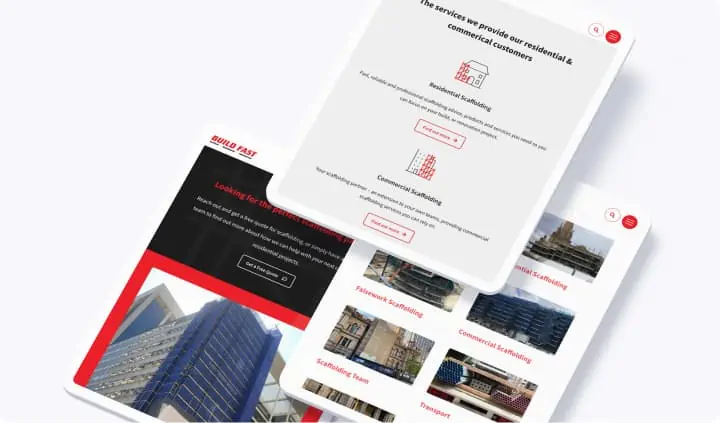Many businesses have a great-looking website with a professional design, and yet fail to achieve the traffic and conversion levels needed for success
This is because there is more to design than pure aesthetic – in order to really achieve the best results for your users, you also need to be providing an incredible user experience, or UX.
What is user experience design exactly?
UX design is a method of crafting your website to support all elements of the user experience
In other words, a website that is easy to navigate, creates a positive feeling within your users, and ensures they feel supported and valued while they browse.
Why is UX design important?
UX design influences all aspects of your website.
- From a marketing point of view, you need to achieve a website that hits your conversion targets, helping leads navigate their way towards becoming fully-fledged customers.
- From the SEO perspective, Google is well aware of website performance and is very likely to include this in their search engine ranking algorithms.
- From an aesthetic design standpoint, UX design means achieving a balance between stunning visuals and an intuitive, easy-to-use page structure.
Let’s take a look at some important UX design principles you need to consider for your website.
UX design principles
What are the key UX design principles? What sort of metrics should you be targeting as you hone your user experience?
Take a look at some of the key aspects of a great UX.
1. Navigation friendly
This is one of the key elements of the user experience.
Put yourself in your user’s shoes – imagine you are navigating the website, you want to make a purchase, but you find yourself having to make numerous clicks through the website structure to get to the product page.
How do you feel? Well, you may persevere and make the purchase, but there’s also a risk that you’re going to get bored and head elsewhere. This means a high rate of churn for leads and prospects.
Now imagine a different scenario. You visit a website and immediately click through to the product listings. All the product categories are neatly laid out for you, and you make your purchase with just two or three clicks. After the purchase, you want to learn more about the item or gain insight into how best to use it – all the content you need is there waiting for you, easy to find and access.
How do you feel now? It’s likely that you feel positive about the website and the business. This kind of empathetic approach – considering the customer’s needs and motivations – is crucial to designing a great user experience.
2. Crawler bot friendly
It’s not just your leads and customers who need to navigate your website. Google’s crawlers need to be able to gain access to all areas of your site, too.
If you have orphan pages, redirect links, or other obstacles to easy crawling, Google may respond poorly, and you may find that your site is not properly indexed.
This has a catastrophic impact on your search engine performance. Make sure that the crawler bot UX design principle is a key part of your strategy, crafting your site structure in a way that makes it easy for Google to index all of your pages.
3. Appropriate design
The user experience hinges upon the kind of impression you make on your leads and customers. For example, if you deploy a bright and bold colour scheme, this may create feelings of excitement and urgency – fine if you are in the children’s toy business, but less appropriate if you are in a more sombre line of work, like the legal or professional services field.
You also need to think about communication. Are your words and your key pieces of messaging being lost in the noise on your web page? If so, your site design and your UX needs a rethink.
Make sure your customers can access all the information they need – quickly and without distraction.
4. Site speed friendly
Site speed is a crucial UX design principle. Statistics show that even a delay of only 1 second as your page loads can reduce page views by 11% – something that could have a significant negative impact on your revenue.
What’s more, Google uses metrics such as the Core Web Vitals to measure site performance and is likely to factor this into search engine ranking decisions.
While lots of visuals and multimedia elements such as video can make your site look great, use these sparingly. Too many of these elements can slow your page significantly. Go for a less-is-more approach, utilising a single impactful video and just a few images.
This will help you to achieve a great-looking website that energises your customers while also making use of those all-important page loading speeds.
UX design principles are crucial – work with the experts in this field
You can’t afford to provide anything less than a top-notch user experience. This is why it’s important to gain expert assistance.

Want to know how your website stacks up? Contact us to discuss how a Website Audit will get you on the right track.


